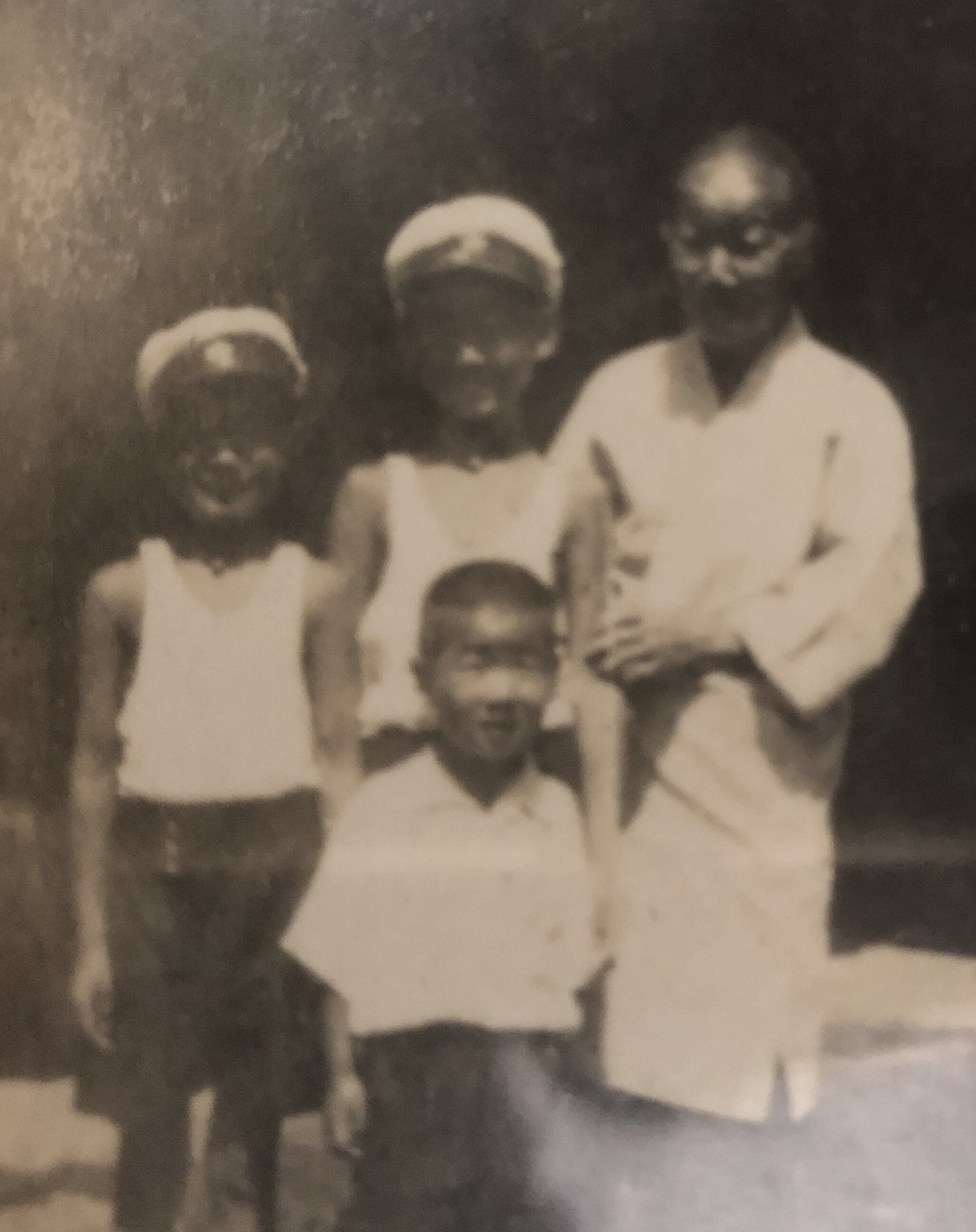“LOST SON” Of Manago Hotel Founders Thriving In Hawai’i
By JODIE CHIEMI CHING
In a previous story about Manago Hotel founders Kinzo and Osame Manago, it was reported that the couple left one son behind in Japan when they returned to Hawai’i after a one-month visit. That son, Isamu Manago, stayed in Japan until he was 19 years old then rejoined his family in Kona. Today, Isamu and his wife Amy are 91 years old and living in the Ala Moana area of Honolulu. He recently shared his story.
Isamu and Amy
After, click here to read the Manago Hotel story that inspired Isamu to tell this story.
Isamu says his mother, Osame, knew her mother had no boys so left him with her when the family went to visit her parents in Japan in 1929. Osame said her father had sent a letter asking to see the children, according to her recollections in “HANAHANA: An Oral History Anthology of Hawaii’s Working People.”
The family took a steamboat and train to the family home on the island of Kyushu. A large crowd waited for them at the station. Osame’s father was so excited to receive Kinzo in his home for the first time that he had readied Japanese-style formal wear for him and a kimono set for her.
“My father said that seeing the children was worth more than a house filled with gold, and he cried, even though he was a man,” she said in her oral interview.
But when it came time to leave, her mother and sisters implored Osame to stay – or at least leave her little boy behind. Without him, her sister said, their mother would “go crazy or become sick.”
“I felt then that I shouldn’t have come back if I’d known that I should have to leave my baby behind,” Osame said. “I didn’t know what to do.”
Ultimately, she decided to leave her boy with her parents. “I was very sad, but I also thought of the time I left my mother many years ago to come to Hawaii. I owed her for that, and I had to pay her back,” she said.
Isamu was raised by Moyo and his aunt, Umeyo. To him, they were all Otosan and Okasan .
Today, he smiles when asked about his mother’s decision to leave him in the care of her parents and sisters in Japan.
“I have no regret,” he said. “They took good care of me. I was a spoiled child.”
Isamu made a lot of friends and when he got to middle school, he started to play basketball.
In 1940, 12-year-old Isamu and his grandparents went to Kona to visit Kinzo, Osame and his brothers and sister: Masakazu, Mildred, Harold, Takashi, Jay and Pentson. For two months, Isamu said, he stayed at the Manago Hotel having fun with his siblings and teasing and chasing the chickens and pigs. He learned how to slaughter a chicken but was shocked to do so. When Osame saw his reaction, she scolded him saying, “You’re a boy,” and that boys should know how to slaughter a chicken.
Isamu returned to Fukuoka on Dec. 7 1941 – a year before the Japanese Imperial navy attacked the U.S. naval base at Pearl Harbor. The police came to Isamu’s home and asked him if he wanted to go “home” to Hawai‘i because the war was about to start. There was one last opportunity for him to catch a boat home. But, Isamu said, home was Fukuoka. So he declined the offer and stayed with the family who raised him.
However, Isamu could not get government ration coupons because he was not a citizen of Japan. Thanks to a suggestion from the village officer, his grandparents adopted him temporarily so he could receive food rations for the family.
He experienced the horror of war. Near his home, Kurume City was “bombed day and night, [as the] planes flew above,” he recalled.
Isamu and some of his classmates worked in the densha, or electric train, garage. One day, he was asked to work on a train damaged by a U.S. plane attack. With his hands up, Isamu described what he saw: “Inside, meat hanging from the ceilings.” All the passengers had been slaughtered.
On Sep. 2, 1945, aboard the USS Missouri in Tokyo Bay, the Japanese signed the formal agreement to surrender, ending World War II. Isamu and his classmates went back to middle school for one year to receive their diplomas and went on to graduate from high school.
In 1947, Isamu left for Honolulu and stayed with his sister, Mildred, in Kaimukï. He promised his Japanese Otosan and Okasan that he would return in four years.
In Honolulu, Isamu took English language classes at Olivet Baptist Church in Makiki. There, he met Amy Mito, his bride-to-be, who lived with her sister, Shizue, in Pälolo. On most days, Isamu would catch the bus home after class. But, in 1948, buses temporarily stopped running because workers went on strike against Honolulu Rapid Transit.
Luckily for Isamu, this gave him an opportunity to walk Amy to her home in Pälolo. Isamu learned that while he spent his childhood in Fukuoka, Amy spent hers in Yamaguchi. Amy was born in Kapoho, but after her mother died while she was still an infant, a doctor adopted her and took her to Japan.
Amy also saw a lot of bloodshed during the war. As a middle school student, she was conscripted to be a messenger for the Japanese Imperial Army. When the war ended her brother, Richard Masayuki Mito, brought Amy to Hawai‘i. Amy and Isamu bonded over memories of the war in Japan and learned that they moved to Honolulu the same year.
Isamu and Amy had much in common and enjoyed each other’s company conversing as they walked from Makiki to Pälolo. Their friendship turned into love and they tied the knot on Aug. 10, 1954.
In 1955, the couple moved to Fukuoka, but after a couple of years, decided that they wanted to plant their roots in Hawai‘i and raise a family. Isamu is a retired electronic technician from Sears Service Center and Amy is a retired seamstress from Tori Richards. Their son, Ralph, works in computers in Honolulu and their daughter Joyce is a homemaker in Massachusetts. Joyce has one son, Liam, who is 19 years old.
Today, Isamu and Amy live a peaceful life in Honolulu and try to make the Manago family reunions that take place every other year in Kona.


